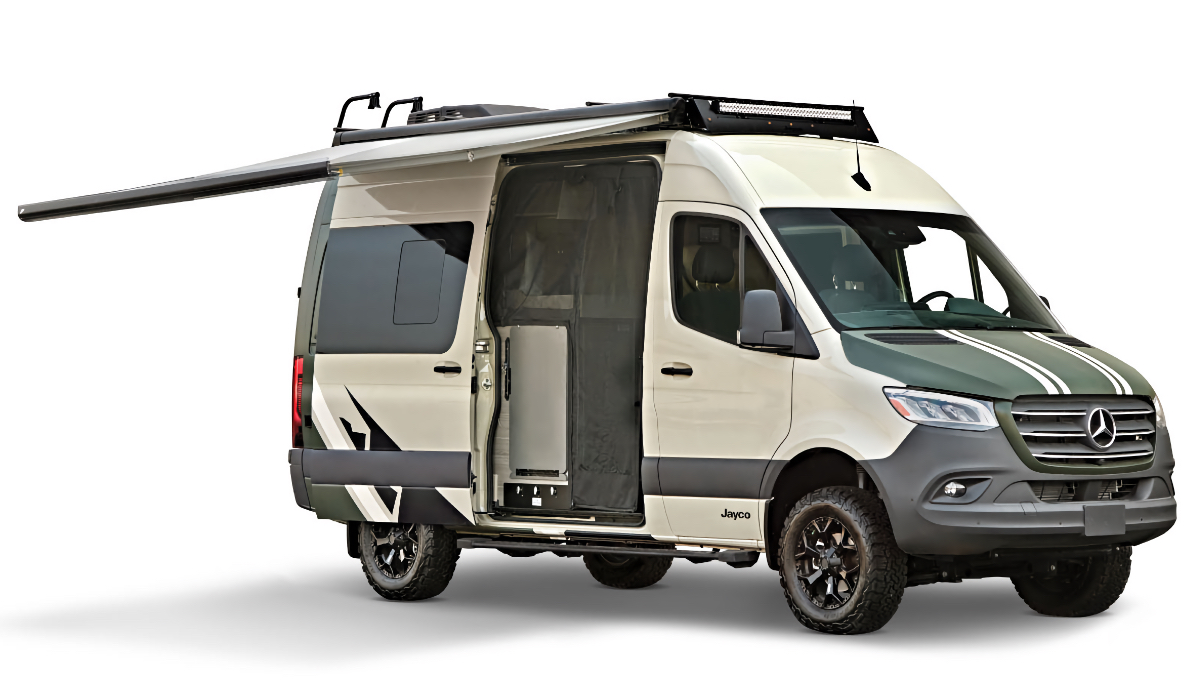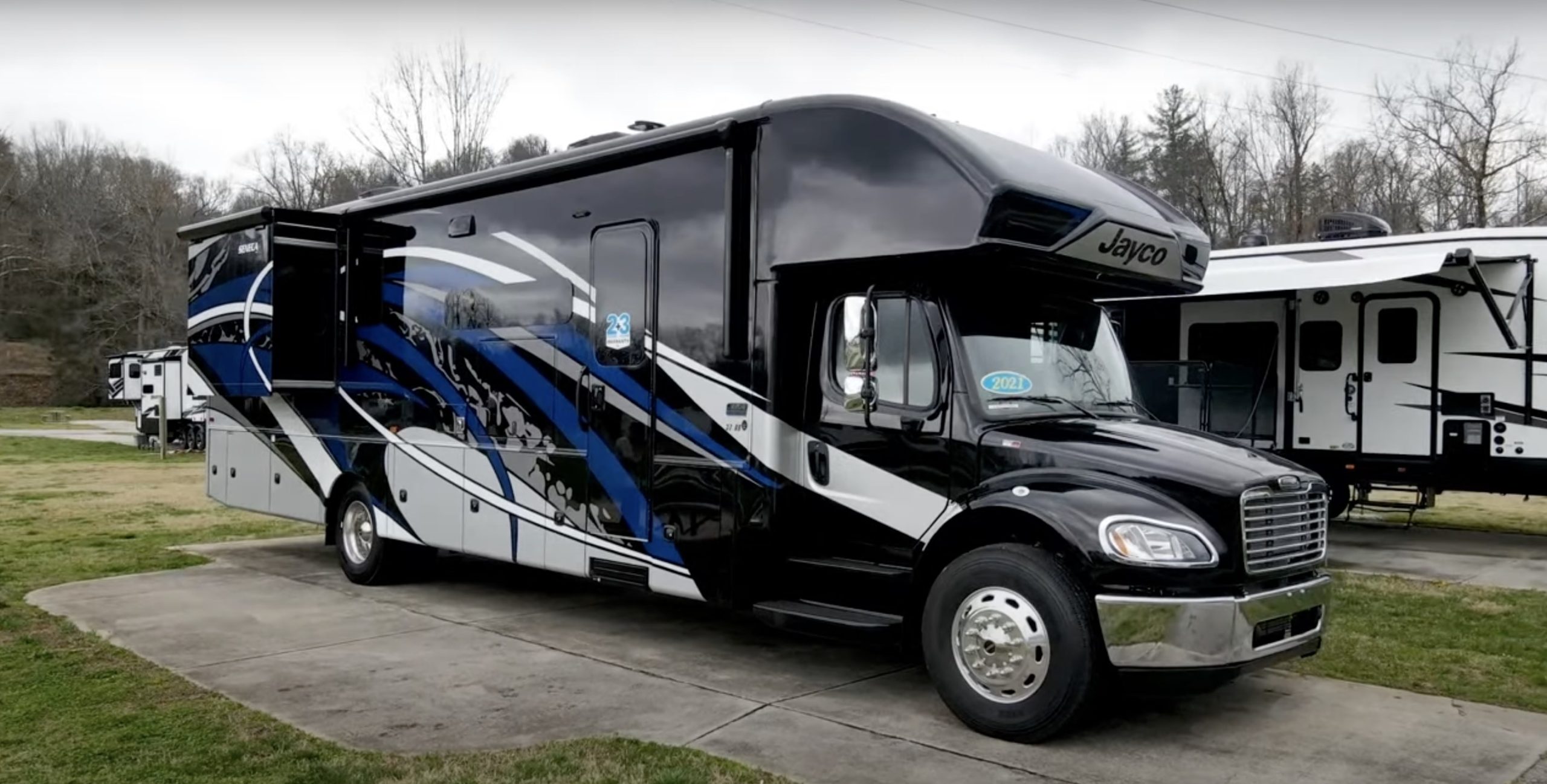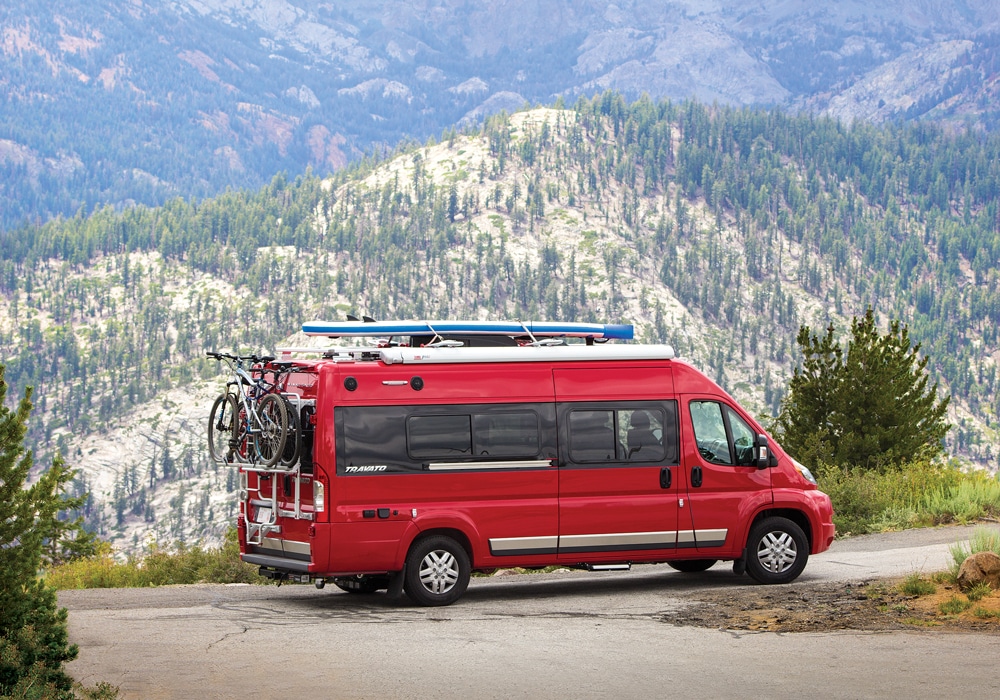Winnebago Revel Test Drive: Rugged without Roughing It
A spartan van-camper takes a shine to Winnebago’s newest, fully loaded Revel.
Image Caption: Photo Credit: Wes Walker
When I pulled into my driveway in Austin recently in a 2024 gunmetal gray Winnebago 4×4 Revel, the neighbors wanted to know what was up with my burly new ride. A buildout of a Mercedes Sprinter, the Revel has black steel rims and on-demand four-wheel drive for charging over broken rocks and furrows like a boss. A detachable rear ladder hangs off a Summit roof rack that surrounds a pair of solar panels. The van looks like it means business.
My neighbors know I love to camp and that I’ll gladly forgo a mattress for a sleeping bag with a view. But I’m softening. Two years ago, my husband and I bought a Ford Transit built out with a bed, cabinets, and a sink—and not much else. Vincent VanGo, as we dubbed it, will never replace backpacking for us, but we love the ease of pulling into a campground, no setup required.
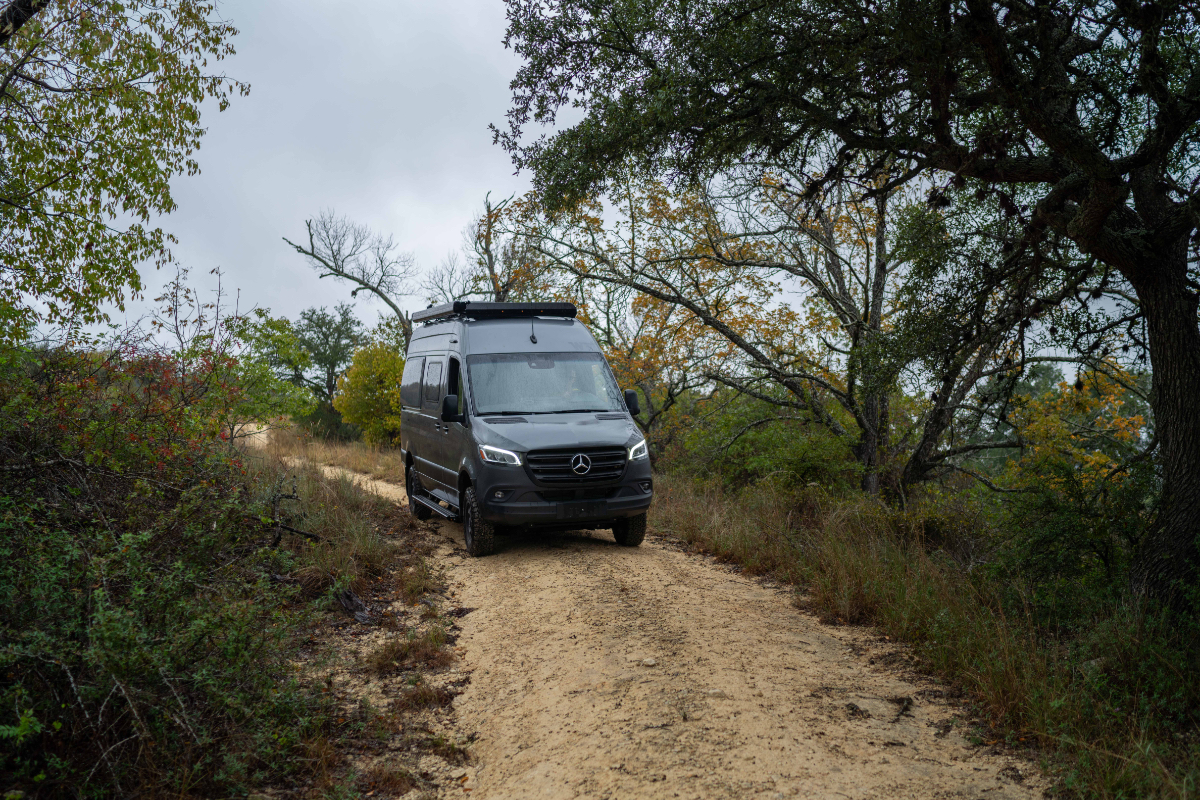
Photo Credit: Winnebago
The Revel, by comparison, is next level. I wondered, would I feel a little too pampered crawling into a full-size power-lift bed that raises and lowers at the press of a button? If I had a cassette toilet, even one just a bit bigger than a Home Depot bucket? Or a shower and a mini fridge filled with beer?
I took the rig for a shakeout run in the Texas Hill Country, where cypresses bend low along the Guadalupe River, and armadillos trundle through the cacti. Not long after setting up at Pedernales Falls State Park, raindrops started smacking the roof. I pressed a switch to automatically deploy a huge awning.
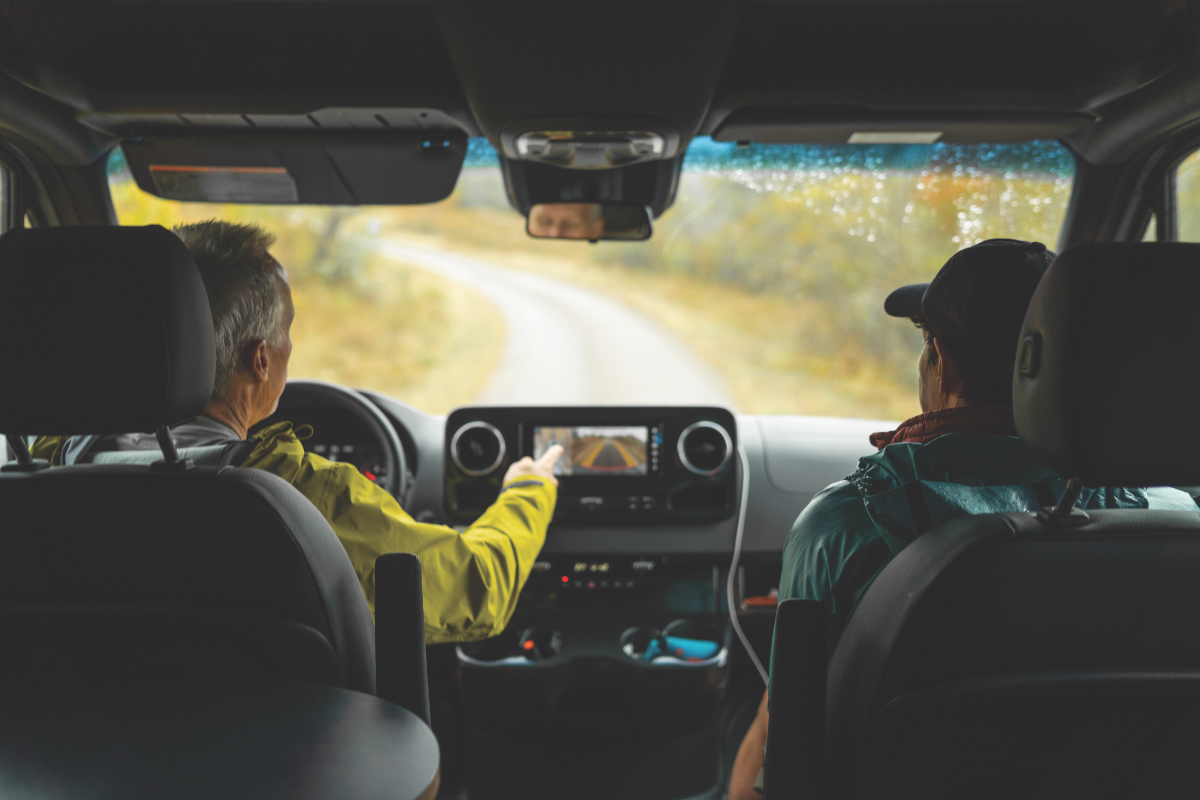
Photo Credit: Wes Walker
“The dirtier it gets, the better,” a Winnebago rep had told me. The Flying W, synonymous with motorhomes, has been in the camper van game since the ’80s (who remembers the LeSharo?). In 2018, it added the diesel-fueled Revel to a Class B lineup that includes the Travato and the Solis, both built on a Ram ProMaster chassis and geared to slightly more genteel travelers. The Revel is Winnebago’s foray into the overlapping space, targeting adventurers who like a little comfort with their far-flung exploits. I could envision a van like this tearing in style across the remotest Australian outback, a modern-day Priscilla, Queen of the Desert.
I did my best to fulfill the dirty-van vision. I exposed the Revel to two days of nearly nonstop rain at Pedernales Falls, then drove up and down steep dirt and gravel roads and through limestone stream beds at a friend’s nearby ranch. At the park, under skies the color of dryer lint, a layer of mud formed on my shoes, thick as a grilled cheese sandwich, as my husband and I tromped to the river. We waded into the chilly Pedernales and basked in the quiet. I crawled onto the knees of a cypress tree so wide that three people couldn’t encircle it. Afterward, when we’d dripped dry and hiked back to the campground, I needed a shower.
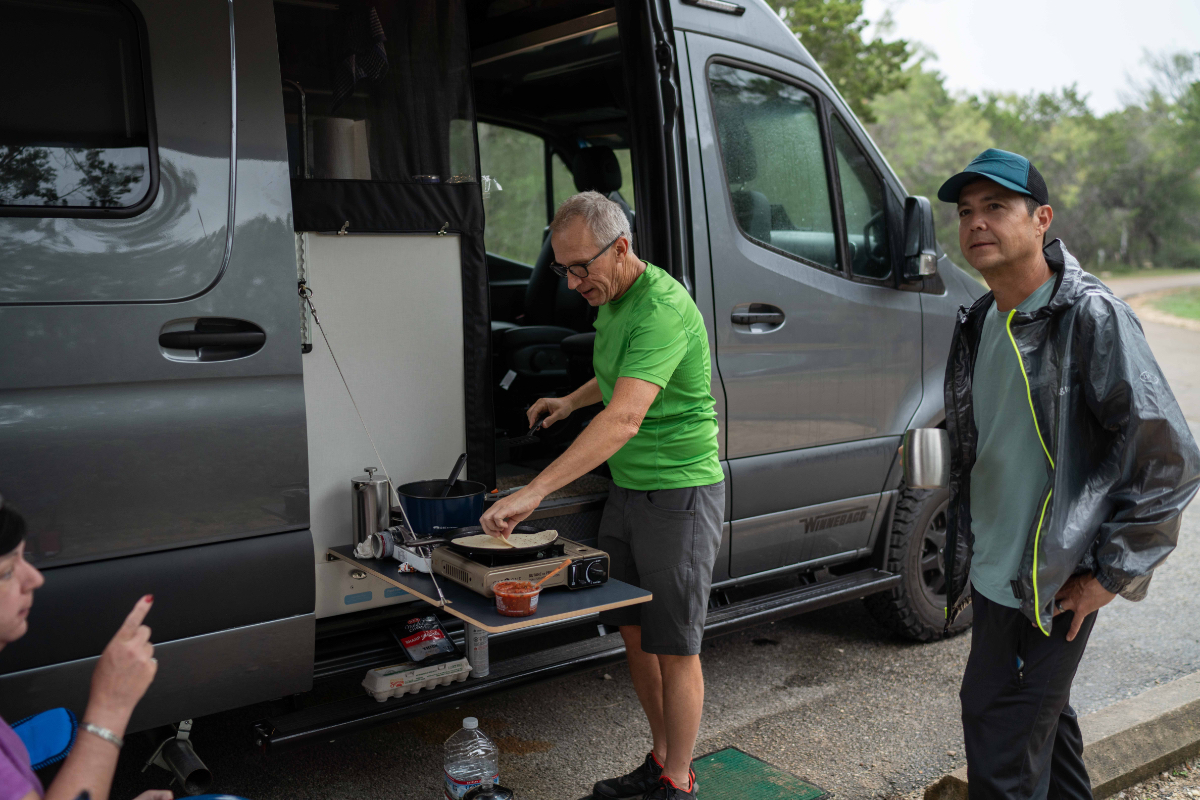
Photo Credit: Winnebago
The Revel’s “wet bath” is literally a closet with a drain: the van comes with removable bamboo shelving and a clothes hanger for when you’re not using the space as a lavatory. When you’re showering, you either sit on the cassette toilet or stand next to it (its holding tank slides out of the van through a neat doggy-sized side door). I snapped the door shut and turned on the water for a basic army bath (the water was hot almost immediately). There’s an exterior wash station, too, with a hose and showerhead running out the rear doors—which makes more sense to me, especially in warm weather. I’d skip the wet bath in favor of the storage since walking around the van with another person is already a lesson in how not to rub bellies.
Things I liked: I’m almost embarrassed to admit how much I loved the power-lift elevator bed in the van’s rear. During the day, we raised it to the ceiling (with me on it first, for fun and to see if I’d squish like a marshmallow, which I didn’t). It made it easy to access the ample storage space beneath: folding chairs, charcoal, a plastic tub full of camping gear. You could even stash mountain bikes back there. No complaints about the bed either—at 5-foot-8, I had some wiggle room, though if you’re 6 feet or taller, you better be flexible.
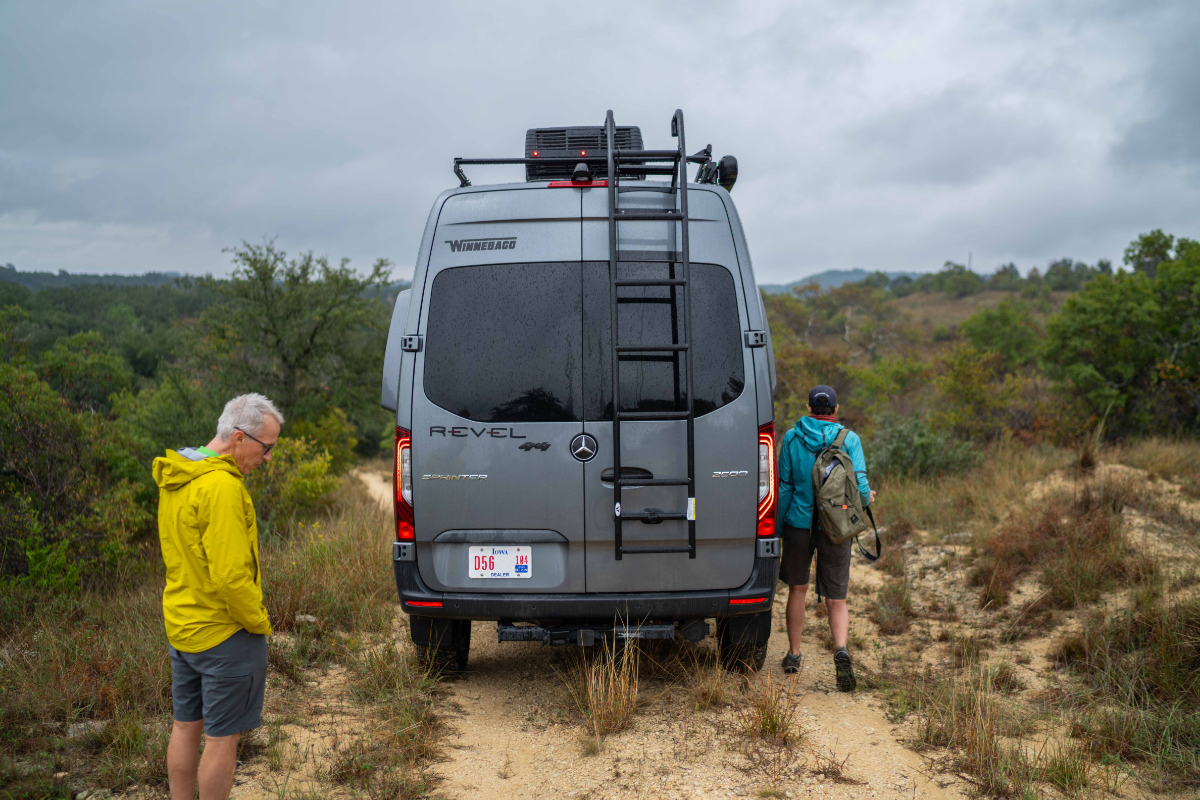
Photo Credit: Winnebago
I also appreciated that push-button awning, although during the height of the storm, it periodically released about a quart of water from the gutter (don’t sit under the gutters). The interior dinette, a bench seat, and a removable, oval-shaped table felt like an old-fashioned diner. Swivel the driver’s seat to face backward, and voila—we’ll take the pancake special, please. Also handy? The flip-down outdoor galley table, where we cooked breakfast tacos and fed our friends, who were camped in tents next door.
At times, the Revel felt a bit at odds with itself. For example, the van rides high enough to clamber over big rocks without bashing its undercarriage. But Winnebago installed a side step bar, which diminishes that ground clearance.
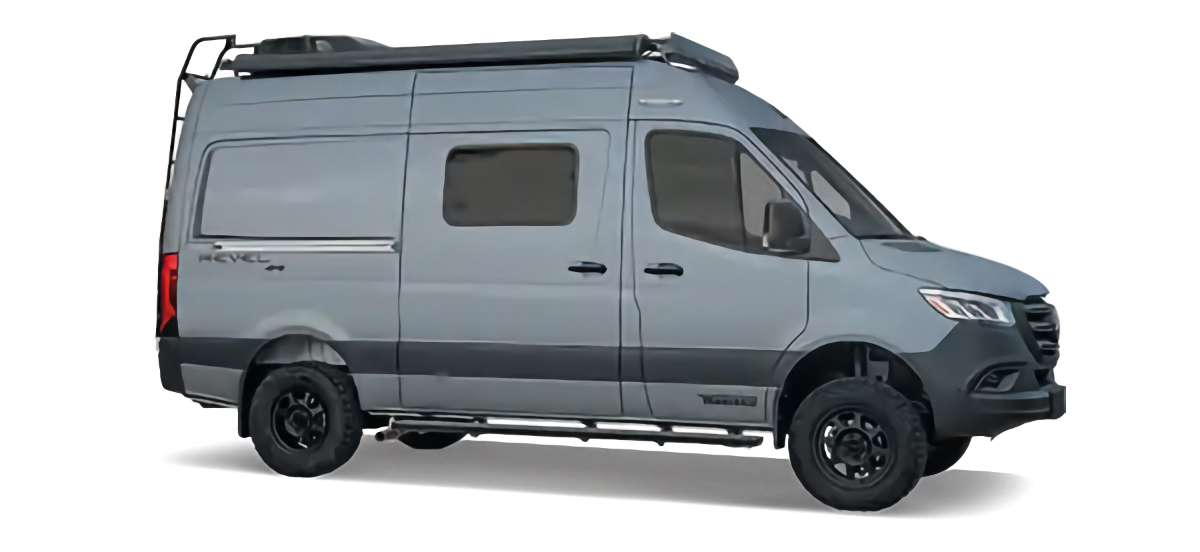
Photo Credit: Winnebago
And oh my gosh, the technology: switches and buttons, touch-screen control panels and digital displays. An app monitors usage on the single 320-amp-hour lithium-ion house battery (an upgrade from a pair of 125-amp-hours prior to last year’s model). We felt like we were consulting the user’s manual for everything—even doing dishes. Midway through washing, the sink backed up. We checked the manual, which alerted us to a macerator pump that solved the problem. With time, my husband pointed out, you’d learn all of this cold. “But it’s not for someone who doesn’t like technology,” he said, looking at me pointedly.
It all comes with a price tag comparable to one of Winnebago’s entry-level Class As. The base MSRP of a Sprinter passenger van hovers around $60,000. A fully outfitted Revel, meanwhile, starts at around $210,000. With that sort of investment and all its capabilities, driving a Revel is really all about getting out—way out—into nature, whether that’s tracking javelinas through the Texas desert or following kangaroos across the outback. I’m all for that kind of adventure, and it turns out I’m all for comfy elevator beds.
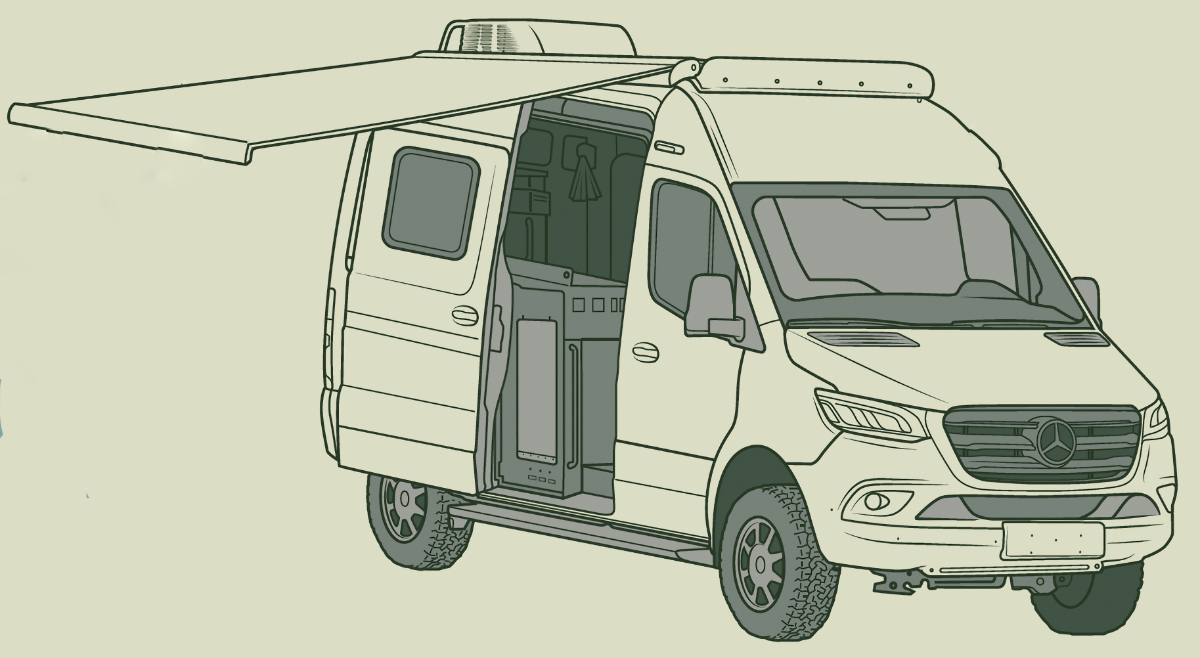
Image Courtesy of Wildsam Magazine
Standout Specs
Length: 19’7″, with a 144″ wheelbase
Height: Exterior 10′, interior 6’3″
Engine: 3.0L six-cylinder, 188-horsepower turbo diesel
Mileage: 15-20 miles per gallon
Features
- A dedicated second alternator charges the Lithionics house battery while driving, as can solar and shore power.
- The Timberline hydronic heating system runs on diesel or shore power and is controlled with a digital touchscreen.
- The galley has a portable, single-burner induction cooktop with a dedicated 20-amp outlet to run it.
- The Revel’s gray-water tank is both insulated and heated, while the freshwater tank is inside the cabin.
- Stock tires are 10-ply Michelin all-terrains, but our Revel had the performance option with Method 701 Bead Grip rims and BF Goodrich T/A KO2 tires.
- The standard drawbar hitch has a 5,000-pound towing capacity.
This article originally appeared in Wildsam magazine. For more Wildsam content, sign up for our newsletter.

